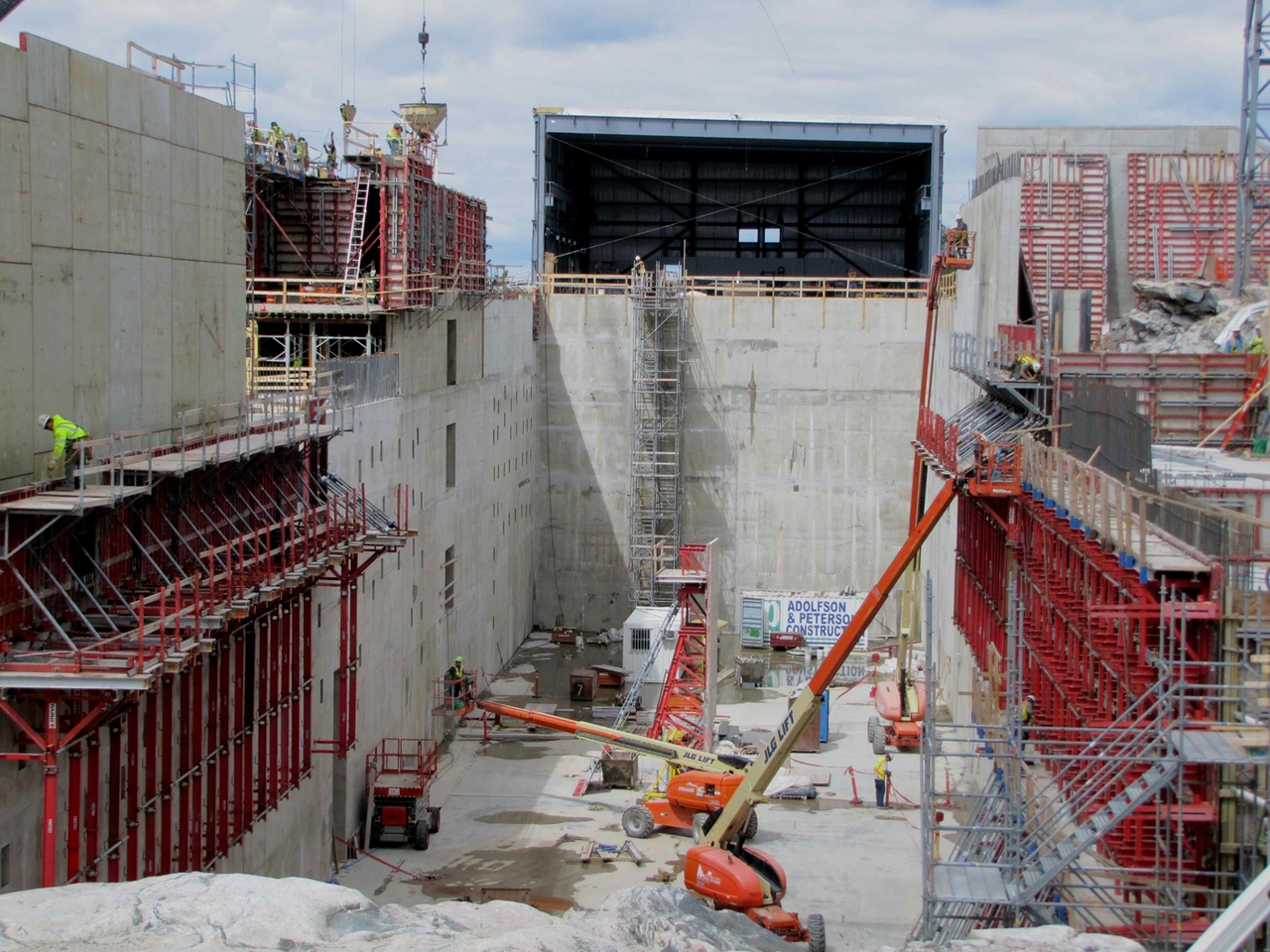Support the Timberjay by making a donation.
Work continues on schedule at NOvA site
Work at the massive new neutrino detector under construction north of Orr continues on schedule, despite one of the wettest summers in recent memory in that area.
About 70 workers have been on …
This item is available in full to subscribers.
Attention subscribers
To continue reading, you will need to either log in to your subscriber account, below, or purchase a new subscription.
Please log in to continue |
Work continues on schedule at NOvA site
Work at the massive new neutrino detector under construction north of Orr continues on schedule, despite one of the wettest summers in recent memory in that area.
About 70 workers have been on the site of the project, primarily pouring concrete for the enormous building that will house the NuMI Off-Axis Electron Neutrino Appearance (or NOvA) detector. According to Project Manager Bill Miller, the crews have been pouring about 1,000 cubic yards of concrete per week.
The first of the large pre-stressed roof beams were delivered to the site on Wednesday and workers will likely start placing them as early as Monday, according to Miller.
The steady progress should allow workers to fully enclose the main building by late October. “The remaining work will be done over the winter,” said Miller.
The building is set for occupancy next March, at which time workers will begin assembling the 15,000-ton detector in a subterranean chamber that has been blasted from the site’s bedrock. Construction of the detector is expected to take two to two-and-a-half years.
The $270 million physics experiment, known as NOvA, is designed to help scientists learn more about the properties of neutrinos. The detector will enable researchers to study a neutrino beam emanating from Fermilab, near Chicago. That beam is currently being observed by the MINOS detector in the Soudan Mine, but the new detector will enable researchers to learn even more about the changes, or oscillations, that neutrinos undergo as they move through space.
MINOS finding excites physicists
Meanwhile, the high energy physics community is still looking for more information following intriguing data on the properties of anti-neutrinos recently collected by the MINOS detector. “We made a big splash showing that what we thought we knew about anti-neutrinos isn’t necessarily the case,” said Miller, who also manages the MINOS laboratory. The findings have prompted Fermilab to order several more months of operation of an anti-neutrino beam in order to further assess the accuracy of the data collected so far. “We want to see if the difference between neutrinos and anti-neutrinos is real,” said Miller.






